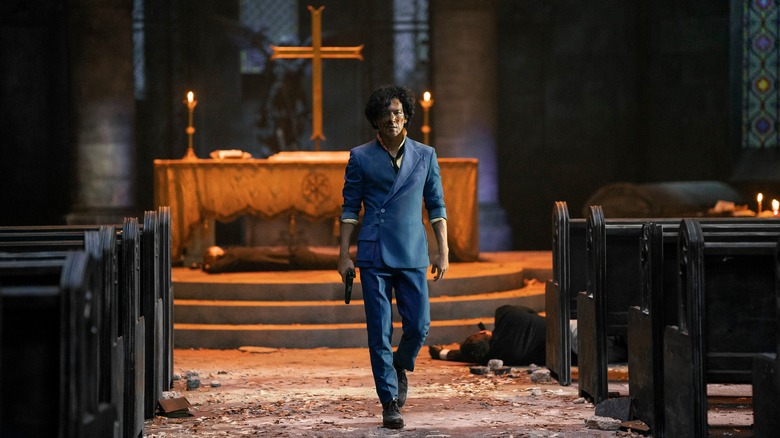
Adapting the beloved sci-fi neo-noir anime series "Cowboy Bebop" is a herculean task. The series had a rocky start after its adult themes caused early cancellation during its initial run, but it became a big hit a year later when all 26 episodes were screened on another network. In 2001, "Cowboy Bebop" became the first anime title to be broadcast on Cartoon Network's Adult Swim programming block, featuring cartoons for mature audiences. The series introduced anime to a whole new Western audience, and showed some viewers that stories full of sex, drugs, violence, and adult situations could work as an animated series. Heck, it was the first anime that I connected with as a teenager looking for something a little more complex than "Tenchi Muyo!" The jazz-inspired soundtrack, cowboys in space aesthetic, and gorgeous animation are what first caught my interest, but soon I fell in love with Spike, Jet, Faye, Ed, and Ein. There's also the Bebop itself, a ship that reminds me of Serenity from "Firefly" or the Millennium Falcon from "Star Wars" — it's something of a miracle that she flies at all but she's held together with love (and duct tape).
So how do you take the effortless cool of "Cowboy Bebop," a surprisingly deep space adventure that traverses our solar system complete with starship dogfights, and turn it into a live-action series? The creative team behind the Netflix live-action adaptation definitely had their work cut out for them. Anime series creator Shinichiro Watanabe was brought in as a consultant, and original composer Yoko Kanno returned to write the score, and their touches are felt throughout the series. The characters feel authentic to their two-dimensional versions, the world is just as deliciously weird, and when the elements line up just right, it manages to tap into the effortless cool that defined the original.
Trying to make "Cowboy Bebop" like a direct copy would have done it a huge disservice; some elements have dated poorly and others serve the narrative style of anime better than live-action. Instead, the series plays like a mash-up: all of your favorite parts are still here, but they've been mixed together and rearranged into something that's a little old, a little new, but still 100% "Cowboy Bebop."
The Crew Has Perfect Chemistry
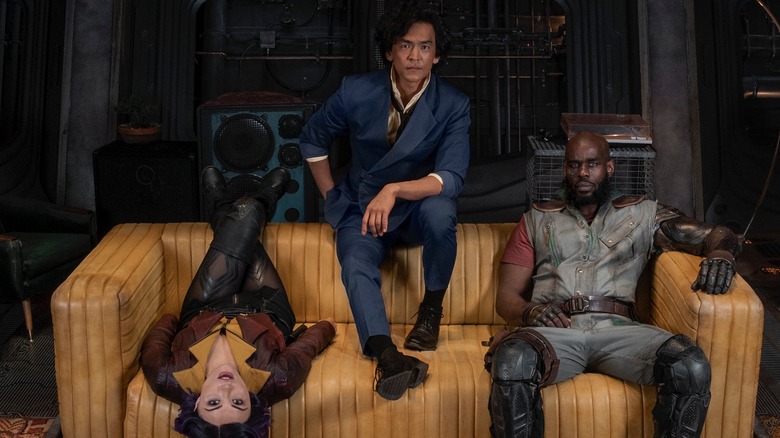
The anime series has a lot of interesting things going on, but the most important element is the dynamic of the crew. The mysterious Spike Spiegel (John Cho), disgruntled retired cop Jet Black (Mustafa Shakir), and amnesiac mischief-maker Faye Valentine (Daniella Pineda) each have serious personal demons, but they manage to come together to help each other anyway. Much like the anime, "Cowboy Bebop" starts with Spike and Jet looking for bounty hunting work to pay the bills. They eventually encounter the wily Faye, who was woken up from cryogenic freezing only two years before and has no memory of her former life. The three of them then try to survive in a ruthless, cutthroat galaxy. The three work as bounty hunters, or "cowboys," capturing wanted criminals and bringing them to justice for money, which is called woolong.
The banter between Spike, Faye, and Jet is pure joy. They frankly discuss food, personal grooming, and sex in the way old friends do, even though their friendship is only beginning. There's an authenticity to the dialogue that's refreshing, and the actors deliver it to perfection. Cho and Pineda have the same sibling-like chemistry that Faye and Spike have always had, and Shakir's Jet is their doting but exhausted father figure. The trio may bicker constantly, but there's love between them. They've found family with one another that they haven't had anywhere else. Spike longs for his lost love, Faye doesn't know her family, and Jet wants to be a bigger part in his daughter's life, but all they have at the end of the day is one another.
Cho's Performance Is Perfection
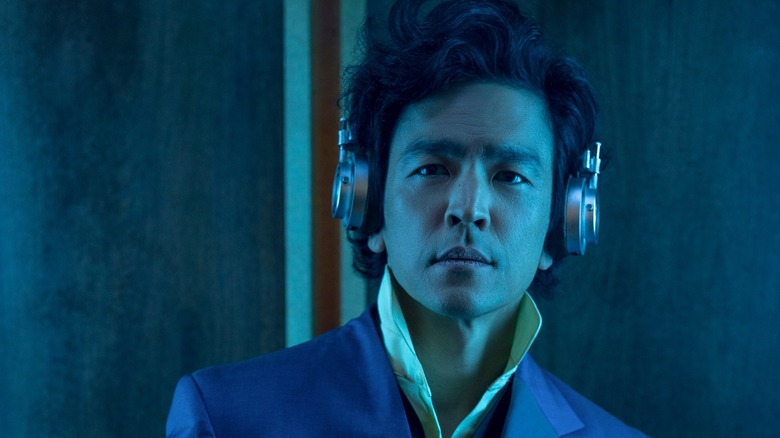
The chemistry between the crew is great in part because of the performances of the three leads. Shakir and Pineda are both great; Shakir's Jet has paternal warmth mixed with the no-nonsense retired cop attitude he needs to survive, while Pineda's Faye is a sassy and street-smart survivor who has a surprising sweet side. But I would be remiss if I didn't mention the absolutely stellar performance given by Cho.
Spike idolizes martial artist Bruce Lee, and Cho studied Lee's movements and martial arts style to prepare for the role. That effort shows, as Cho saunters and slinks his way through scenes like a lazy alley cat. When he's practicing Lee's style, Jeet Kune Do, on a Wing-Chun Dummy, he looks every bit as confident as his animated counterpart. You would think it would be impossible to completely mimic the inhumanly smooth movements of an animated character in reality, but Cho managed to do it. In action sequences, he glides and pivots like a trained dancer; in dramatic scenes he conveys worlds of emotions with just his expression and body language. He's also nailed the cadence of the way Spiegel speaks in the English dub (voiced by Steve Blum). He has a warmer tone than Blum's deep rumble, but the jazzy, almost rhythmic way of talking is dead-on.
Some Great Character Updates
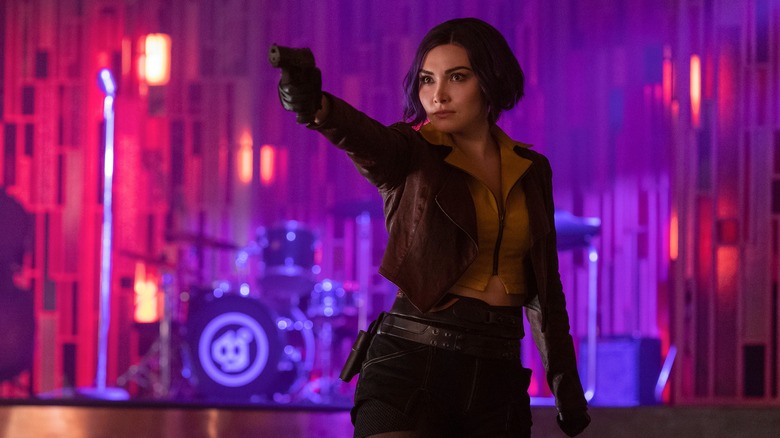
There were a few problematic elements in the animated series that were thankfully given better consideration for the live-action series. Instead of being treated like a bizarre accident, the non-binary character Gren is given a more substantial role and is played with panache by non-binary performer Mason Alexander Park. Spike's old friend Ana is no longer a convenience store owner, but instead runs a bar and jazz club. (She's played by Tamara Tunie, who also gives a pitch-perfect performance.) Women are given more agency in the live-action adaptation in general, and it's both refreshing and a load of fun.
Faye is still a sexual being, but she owns it in a way that doesn't feel like the creepy gaze of the anime. She and Spike have a great conversation about "boobs and butts" while they're both lounging around looking gorgeous. She also gets a small romantic arc with an adorable mechanic that will satisfy fans who always wondered why the anime didn't explore her implied bisexuality further. All of these elements are blended seamlessly into the world and story, and they deepen an already rich canon.
An Unsteady Track That Finds Its Groove
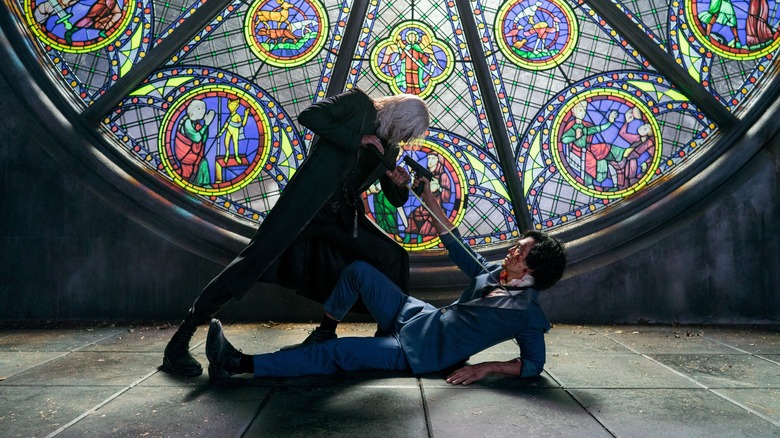
The adaptation starts a little shaky, the tonal dissonance of its high-energy silliness feeling too cartoonish for real people to be acting out. Once Faye joins the Bebop, that weirdness disappears as the interactions between the crew take center stage. It's refreshing that the adaptation is willing to be as aggressively strange as its anime roots, and Netflix's "Cowboy Bebop" does not shy away from the series more peculiar elements. It revels in its own weird world-building without any self-aware nods or meta-commentary; it's incredibly earnest in a way few series would even attempt. Sometimes that makes things feel a little corny, but overall that commitment makes the series sing.
Netflix clearly put a lot of money into the series, because it's stunning to look at. There are massive, complex sets and locations, impressive digital effects, and loads of great, weird costumes. It's shot much like the anime, and edited in a similar quick-cut style. While it can be a little jarring initially, once the series finds its groove it feels natural.
"Cowboy Bebop" is a gorgeous sci-fi neo-noir adventure with a perfect score and loads of great performances. The series is clearly not meant to be a replacement for the anime but a companion piece, and in that goal it succeeds in spades. After gaining traction with some stellar mid-season episodes, the season ends in a way that suggests there could be another season in store. That would make this space cowpoke one very happy camper.
Read this next: The 20 Best Heist Movies Of All Time
The post Cowboy Bebop Review: A Jazzy, Heartfelt Adaptation with Fun to Spare appeared first on /Film.
0 Commentaires